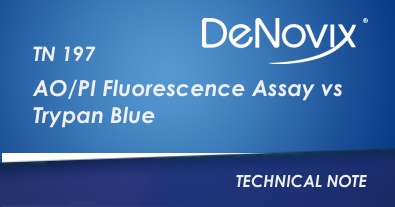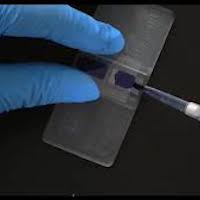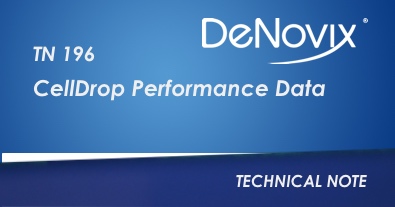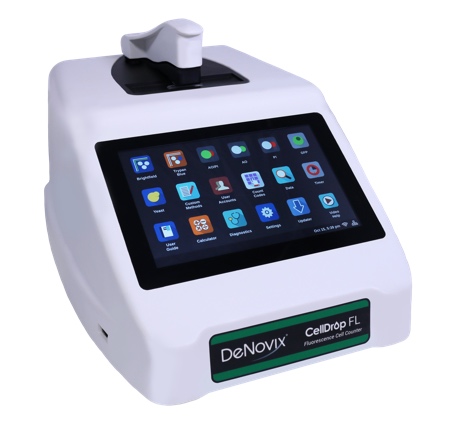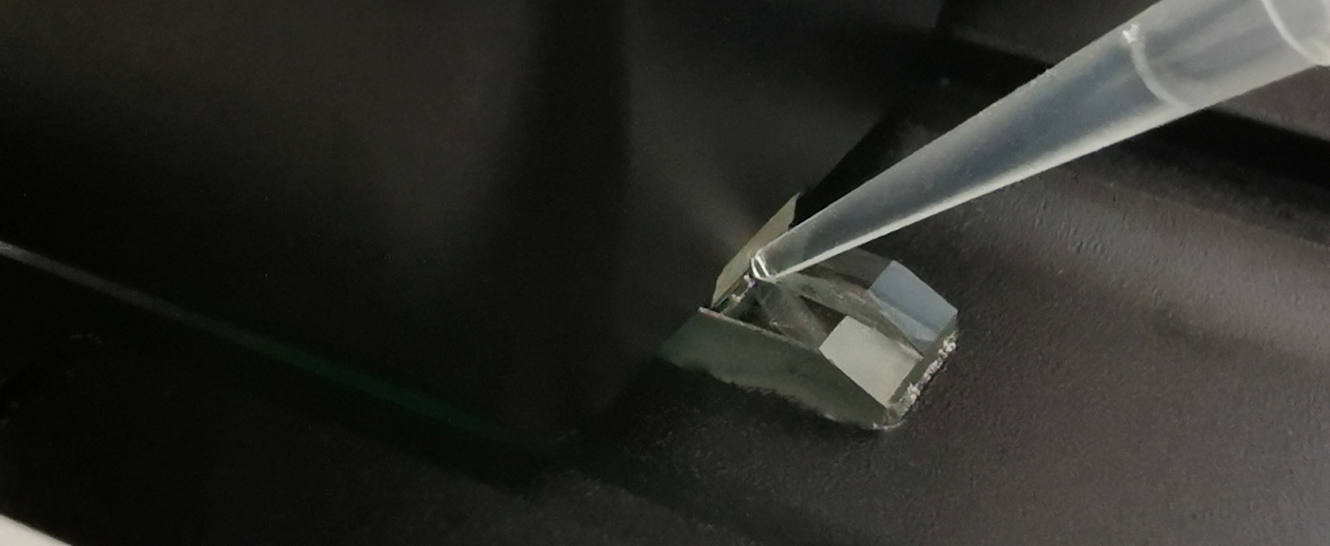In the latest article, Denovix explores the general principles and limitations of cell counting with trypan blue in greater depth. Read more.
The use of trypan blue can be problematic for counting cells and assessing viability in some sample types where debris or non-nucleated cells can interfere. The DeNovix Acridine Orange (Ao) / Propidium Iodide (PI) fluorescence assay is a simple, accurate alternative. Comparative data is presented here.
Manual cell counting with a hemocytometer can be challenging for several reasons. In this blog post, DeNovix explores these issues in more depth.
The NIST has proposed a robust method to assess cell counting linearity and reproducibility. This technical note presents data for the CellDrop using this method and compares results to manually cell counting.
GFP is a common marker for transfection in biological systems. In order to assess transfection success it is important to optimize cell counting settings. this technical note provides a detailed protocol for optimizing the CellDrop GFP Count App.
In this blog post, we will go through each of the individual protocol criteria of our automated cell counters to show how they affect cell counting.
In this blog post, DeNovix will explore some of the principles of automated cell counters in more detail. Read on to learn more.
CellDrop Automated Cell Counters use a patented DirectPipetteTM Technology to replace plastic slides. This method allows variable chamber heights to enhance the cell density range without the need for diluting or concentrating samples.
EasyApps software allows for quick and effective storage, processing and sharing of data. The various options available are presented in this short technical note.
CellDrop™ Cell Counters introduce new levels of precision to biochemistry and life sciences studies investigating cell populations in various sample types.


